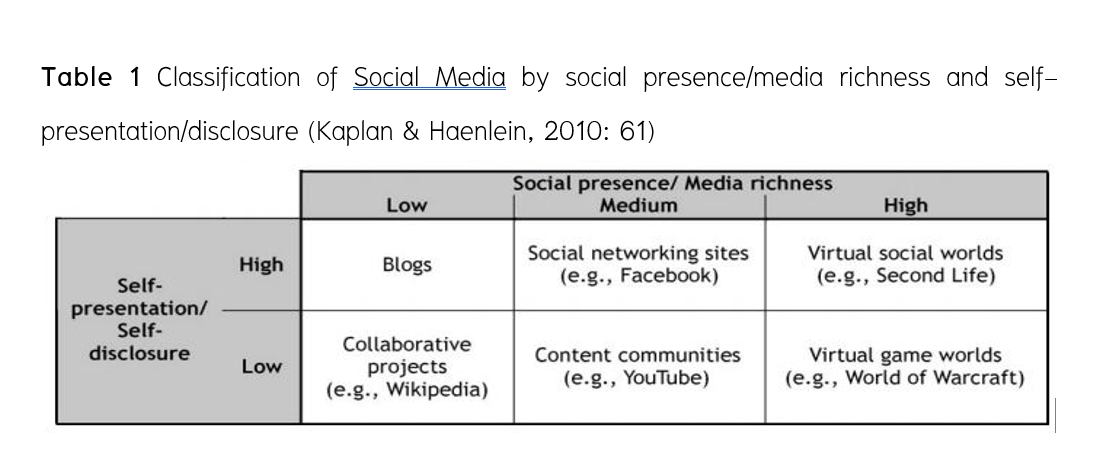Influences of Social Media on Spoken and Written English
Keywords:
Social media, Influences, Spoken and written EnglishAbstract
The goal of this article is to present the influences of social media on spoken and written English. This article began with the definition of the key term of this article, which is ‘social media’. Although social media is widely used, its definition is not clearly known to most people. Most people would only know of the applications found on social media. The definitions of social media vary; however, there are only slight differences among these definitions. In addition to the definition, this article will also bring forth the characteristics seen in the language usage of social media. This explores mainly the morphological and phonological characteristics of the use of English language on social media platforms. In terms of morphology, written forms are seen as deviating from the conventional grammatical rules. The increase in the usage of slangs and abbreviations play a huge role in this deviation. Phonologically, cases of removing a consonant or vowel are seen among social media users. On top of this, the positive and negative effects of social media on spoken and written English will be discussed together with a few other significant issues.
References
Abbas, J. M., Dr. (2019). The Impact of Technology on Modern English Language. Retrieved 2021, From https://www.midad.edu.iq/wp-content/uploads/2019/12/44-The-Impact-of-Technology-on-Modern-English-Language.pdf.
Al Jahromi, D. (2021). A quantitative study of the perceived impact of social media networks on Bahraini users' English language learning. Teaching English with Technology, 20(4), 23-40.
Al-Jammal, K., & Ghamrawi, N. (2013). Between Lebanon and UAE: Principals’ Usage of Social Media What, Where, When and Why?, 4, 748–767. Form https://doi.org/10.14303/er.2013.250.
Attila, B. (2017). The effects of social media on the language Do social networks have damaging or constructing effects on language?. The Effects of Social Media on the Language.
Baldwin, T. (2012). 26th Pacific Asia Conference on Language,Information and Computation, November 8-10, 58–59.
Bayley, R. (1994). Consonant cluster reduction in Tejano English. Language Variation and Change, 6(3), 303–326. Form https://doi.org/10.1017/s0954394500001708.
Blattner, G., & Fiori, M. (2011). Virtual Social Network Communities: An Investigation of Language Learners’ Development of Sociopragmatic Awareness and Multiliteracy Skills. JSTOR, 29(1), 24–43.
Carr, C. T., & Hayes, R. A. (2015). Social media: Defining, developing, and divining. Atlantic Journal of Communication, 23(1). Form doi: 10.1080/15456870.2015.972282.
Chua, Y., Fong, J., Goh, K., & Wong, Y. (2014). The Impact of Social Network on English Proficiency among Students in University Tunku Abdul Rahman (UTAR) Sungai Long, Malaysia, 1-82.
Malaysia. B.A. Research Project. Department of Economics, Faculty of Accountancy and Management, Universiti Tunku Abdul Rahman. Retrieved 2021, From http://eprints.utar.edu.my/1684/1/FYP_Social_Network_Sites_%26_English_Proficiency.pdf.
Eisenstein, J. (2013). Phonological Factors in Social Media Writing. In Proceedings of the Workshop on Language in Social Media (LASM 2013) (11–19), Atlanta, Georgia, June 13 2013.
Gazi, M. A., Çetin, M., & Çakı, C. (2017). The research of the level of social media addiction of university students. International Journal of Social Sciences and Education Research, 3(2). Form doi:https://dergipark.org.tr/en/download/article-file/261063.
Eisenstein, J., O’Connor, B., Smith, N.A., and Xing, E.P. (2012). Mapping the geographical diffusion of new words. PLoS ONE, 9(11): e113114, 1-13. Form https://doi.org/10.1371/journal.pone.0113114.
Eisenstein, J., Smith, N. A. & Xing, E. P. Xing. (2011). Discovering sociolinguistic associations with structured sparsity. In Proceedings of the 49 Annual Meeting of the Association for Computational Linguistics: Human Language Technologies. Portland, Oregon, USA, 1365-1374.
Fall, O. (2018, October 3). 1.1. how to do morphological analysis (or any ... / 1-1-how-to-do-morphological-analysis-or-any.pdf / PDF4PRO. PDF4PRO. Retrieved October 12, 2021, From https://pdf4pro.com/view/1-1-how-to-do-morphological-analysis-or-any-343865.html.
Johnson, J. (2021, January 27). Internet: Most common languages online 2020. Statista. Retrieved October 12, 2021, From https://www.statista.com/statistics/262946/share-of-the-most-common-languages-on-the-internet/.
Kaplan, A. M., & Haenlein, M. (2010). Users of the world, unite! the challenges and opportunities of social media. Business Horizons, 53(1), 59–68. Form https://doi.org/10.1016/j.bushor.2009.09.003.
Leonardi, P. M., Huysman, M., & Steinfield, C. (2013). Enterprise social media: Definition, history, and prospects for the study of social technologies in organizations. Journal of Computer-Mediated Communication, 19(1), 1–19. Form https://doi.org/10.1111/jcc4.12029.
Lin, C.H., Warschauer, M., & Blake, R. (2016). Language learning through social networks. Language Learning and Technology, 20(1), 124-147. Retrieved November 03, 2021 From https://scholarspace.manoa.hawaii.edu/bitstream/10125/44449/1/20_01_linwarschauerblake.pdf.
Lisa J. Green. (2002). African American English: A Linguistic Introduction. Cambridge University Press.
Marie-Hel´ ene C ` otˆ e. (2004). Consonant cluster simplifica- ´ tion in Quebec French. Probus. International journal of Latin and Romance linguistics, 16, 151–201.
Mason, R., & Rennie, F. (2008). E-learning and Social Networking Handbook. Retrieved October 13, 2021, From https://www.researchgate.net/publication/42795955_E-Learning_and_Social_Networking_Handbook.
Matthew J. Gordon, (2004). New York, Philadelphia, and other northern cities. In Kortmann et al. Handbook of Varieties of English Volumn 1. 282–299.
Murugesan, S. (2007). Understanding web 2.0. Retrieved April 08, 2021, From https://ieeexplore.ieee.org/document/4287373.
Page, R., Barton, D., Unger, J. W., & Zappavigna, M. (2014). Researching Language and Social Media: A Student Guide. Abingdon, New York: Routledge.
Richter, F. (2021). Infographic: Facebook Keeps on Growing. Statista Infographics. Form https://www.statista.com/chart/10047/facebooks-monthly-active-users/.
Risto, A. (2014). The Impact of Texting and Social Media on Students' Academic Writing Skills. ETD Collection for Tennessee State University. Paper AAI3683242. Form https://digitalscholarship.tnstate.edu/dissertations/AAI3683242.
Ryssdal, K. (2019, April 27). The story of the first email spam message. Marketplace. Form https://www.marketplace.org/2013/05/03/story-first-email-spam-message.
Safko, L. (2012). The Social Media Bible: Tactics, Tools & Strategies for Business Success. Wiley. Sali Tagliamonte and Rosalind Temple. 2005. New perspectives on an ol’ variable: (t,d) in British English. Language Variation and Change, 17, 281–302.
Tariq, W., Mehboob, M., Khan, M. A., & Ullah, F. (2012). The Impact of Social Media and Social Networks on Education and Students of Pakistan. The Impact of Social Media and Social Networks on Education and Students of Pakistan, 9(4), 407–410.
Thurairaj S, Hoon E P, Roy S S and Fong P K. (2015). Reflections of Students’ language Usage in Social Networking Sites: Making or Marring Academic English. The Electronic Journal of e-Learning, 13(4), 302-316.
Wood, C., Jackson, E., Hart, L., Plester, B., & Wilde, L. (2011a). The effect of text messaging on 9- and 10-year-old children’s reading, spelling and phonological processing skills. Journal of Computer Assisted Learning, 27, 28–36. doi:10.1111/j.1365-2729.2010.00398.x.

Downloads
Published
How to Cite
Issue
Section
License
Copyright (c) 2022 Phayao University

This work is licensed under a Creative Commons Attribution-NonCommercial-NoDerivatives 4.0 International License.
ผู้นิพนธ์ต้องรับผิดชอบข้อความในบทนิพนธ์ของตน มหาวิทยาลัยพะเยาไม่จำเป็นต้องเห็นด้วยกับบทความที่ตีพิมพ์เสมอไป ผู้สนใจสามารถคัดลอก และนำไปใช้ได้ แต่จะต้องขออนุมัติเจ้าของ และได้รับการอนุมัติเป็นลายลักษณ์อักษรก่อน พร้อมกับมีการอ้างอิงและกล่าวคำขอบคุณให้ถูกต้องด้วย
The authors are themselves responsible for their contents. Signed articles may not always reflect the opinion of University of Phayao. The articles can be reproduced and reprinted, provided that permission is given by the authors and acknowledgement must be given.







